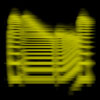| Author
|
Learn me how to use compressors
|
Conny
IsraTrance Senior Member

Started Topics :
224
Posts :
149
Posted : Dec 22, 2010 09:04:37
|
Hi !
My biggest problem when it comes to musicproduction is the use of compression.
So i have some questions that maybe you people could help me with.
1 Which instruments should i use the compressor on in trance ? (i mainly focus on having a compressor on the kick )
2.What happens to the mix when you are using compressors.How does it sound ?
3 Can i use extreme compression settings or should i compress extremly low
4 Does compression affect the timing in music, can it make the music to sound more rythmic ?
Would be great if anyone could help me |

|
|
makus
Overdream

Started Topics :
82
Posts :
3087
Posted : Dec 22, 2010 09:27
|
1. compress those sounds which are dynamically wide (have quiet a difference between the quietest and the loudest parts). the goal is to have louder parts quieter and vice versa. keep in mind, that sometimes you want to save the original (wide) dynamics of sounds by the concept, bypass the compressor in this case.
by using sidechain compression you can (at least partially) solve problems with clashing/overlapping frequencies. the most common usage is sidechaining bass to kick. in modern dance music producers use lots of sidechain, compressing almost every part of the track (i mean eurotrance, electro, techno etc).
2. just imagine if even quiet parts of the sounds are heard in the mix - that will make it richer, tigher. also it will help make the track louder while mastering and avoid problems with random peaks everywhere.
3. if it sounds good - it is good. but be carefull and check the results over time.
4. well, not sure what you mean, but in certain cases the sound can become punchier. lifeless drum or perc loops can get life, and become groovier. if this helps tioming and rhythm, than the answer is yes.
       
www.overdreamstudio.com |

|
|
elastic_plastic
Re-Boot

Started Topics :
112
Posts :
1612
Posted : Dec 22, 2010 10:11
|
|
Upavas
Upavas

Started Topics :
150
Posts :
3315
Posted : Dec 22, 2010 10:55
|
1. Try to use compression as little as possible.
2. See Makus explanation!
3. lower compression leaves you more dynamic range, which gives the overall sound more depth. (See point 1)
4. Sidechaining elements to e.g the kick, meaning letting the kick signal gives your sound a strong pumping feel. Try ducking a bass with a kick and set the realease settings a bit higher, you'll see what I mean.
Basic idea, compression brings the loud tones down, expansion brings the quiet tones up. Compression is like looking at a wave file depiction and squishing it together horizontally!
        Upavas - Here And Now (Sangoma Rec.) new EP out Oct.29th, get it here: Upavas - Here And Now (Sangoma Rec.) new EP out Oct.29th, get it here:
http://timecode.bandcamp.com
http://upavas.com
http://soundcloud.com/upavas-1/ |

|
|
Nectarios
Martian Arts

Started Topics :
187
Posts :
5292
Posted : Dec 22, 2010 12:37
|
Quote:
|
On 2010-12-22 10:55, Upavas wrote:
Basic idea, compression brings the loud tones down, expansion brings the quiet tones up.
|
|
When you compress a signal you bring the peaks down but you also bring the quieter elements, up.
...For example if you compress a noisy source a lot, you get a lot of noise in your mix.
Peace out.
       
http://soundcloud.com/martianarts |

|
|
Padmapani

Started Topics :
2
Posts :
431
Posted : Dec 22, 2010 14:19
|
another tip with compression is to play with the gain of the compressor (after you got it's other settings right) until the compressed signal sounds as loud as the uncompressed signal to you. this way you can double check if the compressor really makes the channel you're compressing sound better (if that's your intention) or if the compressor destroys the sound too much (if your intention is simply to bring the volume of a few peaks down a bit).
this is important as most compressors have some kind of "auto-gain" feature and by default will make your signal sound louder than it was before compression, which automatocally makes it sound better to your ears in the short term. |

|
|
monno
Grapes Of Wrath

Started Topics :
9
Posts :
454
Posted : Dec 22, 2010 17:06
|
A compressor works on the loudest parts of a given sound and acts as an automated volume control. If the signal level goes beyond a user set "threshhold" then the compressor will start to affect the dynamics. How hard that compression is, is usually defined by the ratio (less meaning less compression takes place) A compressor will do nothing to bring out low level detail, simply because of the way it works (turning down the volume when a certain limit is reached) The reason why a compressor might seem to bring up the noisefloor is because the plugin or hardware often employs a gain make-up to compensate for level lost during compression.
In effect we compress and then turn up the signal thus naturally bringing up the noisefloor (compression on it´s own will do little to bring out low level detail, unless it is being used to senselessly squash material into the ground)
To bring out low level detail we must apply a dynamic process known as expansion (a form of reverse compression you could say)
To be on point there are no hard and fast rules on when and how to apply compression. It is very much dependent on ears and experience, so please do experiment.
No complaining if it sounds like crap though. Compressors can be unforgiving beasts especially when poorly operated, but there is only one way to find out and thats to start compressing 
In essence not a lot of compression is needed in modern music as the instruments and the programming has little dynamics to begin with. There is a lot to be said for using compressors on buses etc. using deliberately colored effects (i am referring to UAD plugs here and cannot give you a native alternative) to help "warm" up the sound and give it a less sterile taste to it.
        Mastering available here: Mastering available here:
http://www.bimmelim-soundlabs.com
http://soundcloud.com/onkeldunkel
http://www.myspace.com/onkeldunkelownz
http://www.parvati-records.com |

|
|
wyl_e_peyote

Started Topics :
5
Posts :
22
Posted : Dec 22, 2010 17:10
|
http://www.soundonsound.com/sos/sep09/articles/compressionmadeeasy.htm
check this out, its about compressors, not compressors in psy... everything you need to demystify dynamic controls in this article, other than that there is a great section on FX and Dynamic control here....
http://www.soundonsound.com/articles/Technique.php
also, if you wiki it, there is loads of info online, with a great set of links to fantastic articles. Its better to understand what a compressor is for, rather than task specific, as the application changes dependant on what it is you are wanting to do.
remember a compressor is for gain reduction and peak control, nothing more, although it can be used in a musical sense, it is better that you use it transparently and make your music make music and your dynamic control, control dynamics.
Also remember that if you compress something too much, such as a subby kick, you can turn it into a click by pulling all the dynamic of the sub from it by being heavy handed, or reinforce the punch from the sub by caressing the kick with compression.
Another thing to remember is, although you may get a part sounding absolutely fantastic on its own, the part may cloud the mix by introducing artifacts to the overall mix that you dont want. This is where your EQ comes into play.
your insert chain should be... Expander (downward compression, to control the noise floor and set bottom of dynamic range, ....Gate, (to stop unwanted noise below threshold),...... EQ (Parametric)to shape your sound(the most important part of the chain) and then finally....Compression, by the time your signal gets here, it should be controlled enough to just require minimal control.
Hope this helps. Now go have some fun... |

|
|
wyl_e_peyote

Started Topics :
5
Posts :
22
Posted : Dec 22, 2010 17:14
|
also remember that you shouldn't use compression on a clipped signal, it only reinforces the distortion of the clipped wave in the mix......you could want this, but.....in my experience you'll prob want to remove it.......
REMEMBER....You cant polish a turd, shit in.....shit out
        MOJO DOJO MOJO DOJO
http://www.soundcloud.com/mojo-dojo |

|
|
daark
IsraTrance Full Member

Started Topics :
58
Posts :
1397
Posted : Dec 22, 2010 17:44
|
|
makus
Overdream

Started Topics :
82
Posts :
3087
Posted : Dec 22, 2010 17:46
|
Quote:
|
On 2010-12-22 17:44, daark wrote:
guy sais "i stoped using compressors i use volume envelopes"
ooook thats reasonable X_X
|
|
back to the old school
       
www.overdreamstudio.com |

|
|
daark
IsraTrance Full Member

Started Topics :
58
Posts :
1397
Posted : Dec 22, 2010 18:10
|
Quote:
|
On 2010-12-22 17:46, makus wrote:
Quote:
|
On 2010-12-22 17:44, daark wrote:
guy sais "i stoped using compressors i use volume envelopes"
ooook thats reasonable X_X
|
|
back to the old school
|
|
i just record myself tweaking the volume with my mouse
"lo-fi"        http://soundcloud.com/magimix-1/chilling-forest-whispers http://soundcloud.com/magimix-1/chilling-forest-whispers
Wierd shit happens :) |

|
|
daark
IsraTrance Full Member

Started Topics :
58
Posts :
1397
Posted : Dec 22, 2010 18:20
|
|
aciduss
IsraTrance Full Member

Started Topics :
112
Posts :
1490
Posted : Dec 22, 2010 18:30
|
I tend to use compressors to tweak a sound's attack most of the time.
It can make snappy drums and synths... if you compress the body of sound using a 20ms attack more or less, u can also use compressor to attenuate attack by setting it to zero.
Also can be used to "tame" synths that have a very modulated wave so it kinds of sounds more consistent under a compressor.
It is like a hammer or any tool, you can use it to smash ur work or to cleverly fix some of its details. |

|
|
Colin OOOD
Moderator

Started Topics :
95
Posts :
5380
Posted : Dec 22, 2010 18:37
|
Quote:
|
On 2010-12-22 18:10, daark wrote:
Quote:
|
On 2010-12-22 17:46, makus wrote:
Quote:
|
On 2010-12-22 17:44, daark wrote:
guy sais "i stoped using compressors i use volume envelopes"
ooook thats reasonable X_X
|
|
back to the old school
|
|
i just record myself tweaking the volume with my mouse
"lo-fi"
|
|
A standard technique used by some of the most experienced mix engineers when using large-format mixers with moving-fader automation is also not to use compression for dynamics, but to record fader movements to compensate for rapid changes in channel level. Apparently when watching the mix play back, the faders seem to vibrate! So this isn't such a stupid idea at all, perhaps, although you'd need a control surface of some kind to do it justice 
        Mastering - http://mastering.OOOD.net :: www.is.gd/mastering Mastering - http://mastering.OOOD.net :: www.is.gd/mastering
OOOD 5th album 'You Think You Are' - www.is.gd/tobuyoood :: www.OOOD.net
www.facebook.com/OOOD.music :: www.soundcloud.com/oood
Contact for bookings/mastering - colin@oood.net |

|
|